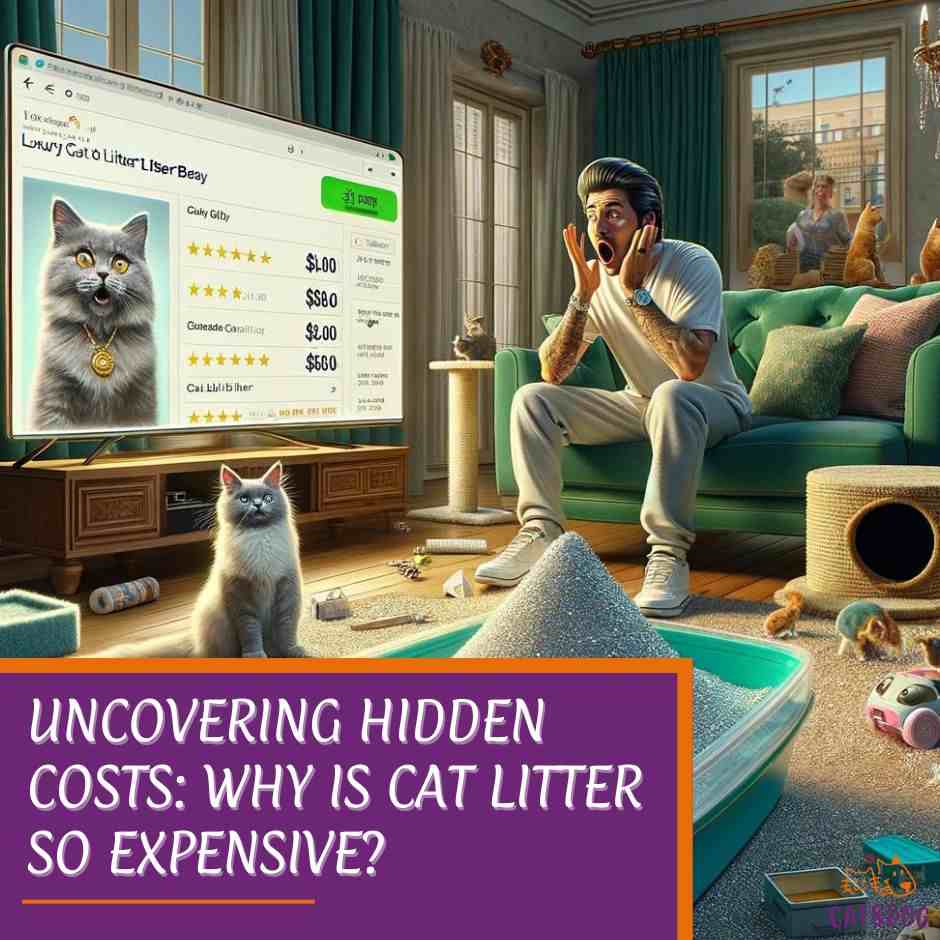Pet parents, you might ever wonder why is cat litter so expensive.
Besides its essential use, several factors contribute to the high cost of cat litter, including the quality of ingredients used, advanced odor control technology, packaging materials, and marketing expenses.
Additionally, cat litter is a consumable product, so ongoing purchases are necessary, leading to higher overall costs.
Ever scooped a litter box and wondered why keeping it filled costs almost as much as spoiling your feline friend with new toys? You’re not alone.
The price tag on cat litter often leaves cat owners scratching their heads, as this essential pet care product can sometimes seem unjustifiably high.
As any cat owner knows, a clean and odor-controlled litter box is vital for the comfort and hygiene of both the pet and home, making cat litter an indispensable item on the shopping list.
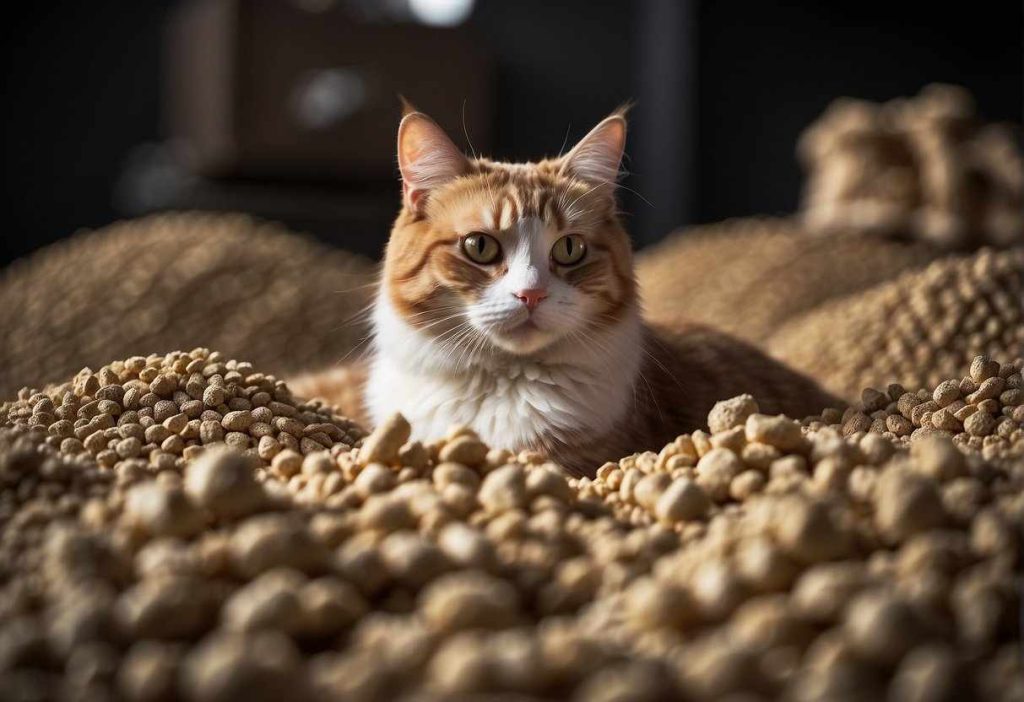
The expense of cat litter can be attributed to a variety of factors that stretch from production to the point of sale.
The quality of materials used for clumpability and odor control, combined with the mining and processing of these materials, contribute substantially to the overall cost.
Moreover, the heft of the product affects transportation costs, further inflating the price.
Considerations for your cat’s health and the environmental impact of the litter also play a role in determining the price of higher-end options.
You might not see these costs, but your wallet certainly feels them.
Key Takeaways
- Cat litter is costly due to high-quality materials, production, and transportation expenses.
- Health and environmental considerations influence the price of cat litter.
- Understanding these factors can help you make informed decisions and explore alternative solutions.
Why is Cat Litter So Expensive: Understanding the Factors
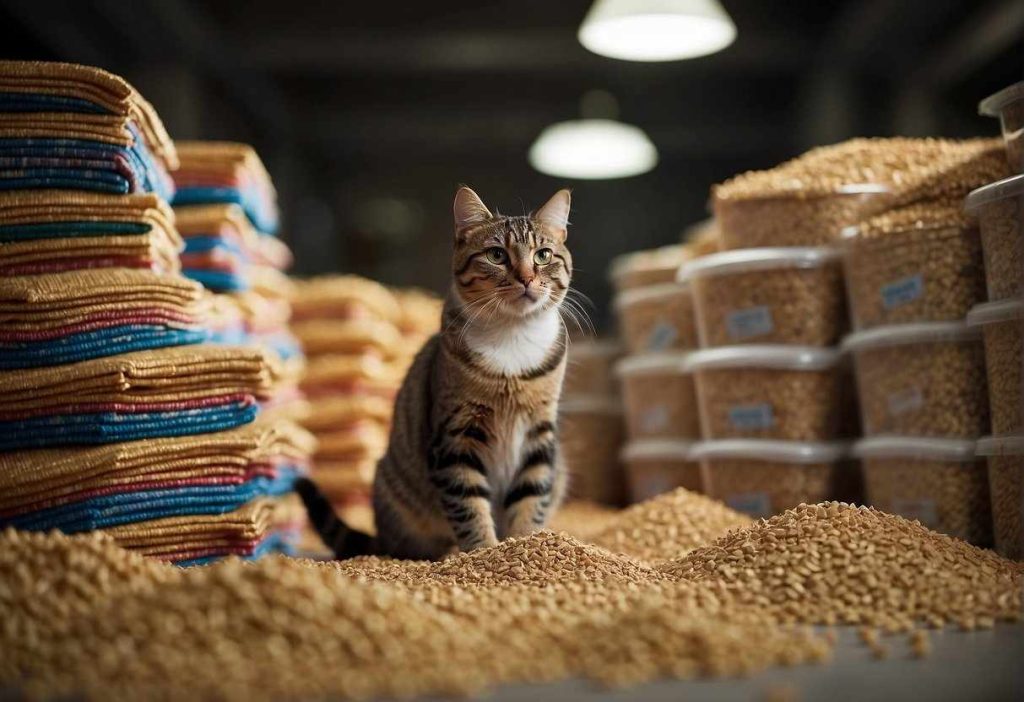
Factors Influencing Prices
You’re paying not just for litter but also for:
- Quality of Ingredients: Higher-end litters often use premium materials like bentonite clay for better clumping and odor control. (1)
- Production and Manufacturing Process: From mining the clay to packaging it up, a lot of energy and resources go into making sure your kitty has a place to go.
Comparison of Natural vs. Synthetic Materials
- Natural Materials: More expensive due to sourcing and processing costs but preferred for their eco-friendliness.
- Synthetic Materials: Cheaper alternatives, yet they may lack the clumping and odor control characteristics.
Cost Breakdown
Think about what goes into making litter:
- Materials: The better the materials, the higher the cost.
- Manufacturing: It’s got to be mined, processed, and shipped.
- Marketing and Packaging: Attractive bags with cute cats don’t design themselves!
These factors contribute to the final pricing. (2)
For instance, a bag of high-quality clay litter might be costlier due to its superior absorbency and odor control.
Impact on Final Pricing
- Marketing and Branding: Competition is fierce, and companies invest in making sure you choose their litter over others. (3)
- Packaging: A well-designed package that stands out on the shelf can increase the price a bit.
Remember, all these elements ensure that your feline friend’s litter box experience is top-notch, and that convenience comes with a price tag.
So, next time you’re stocking up, you’ll know exactly what you’re paying for!
Comprehensive Cost Analysis
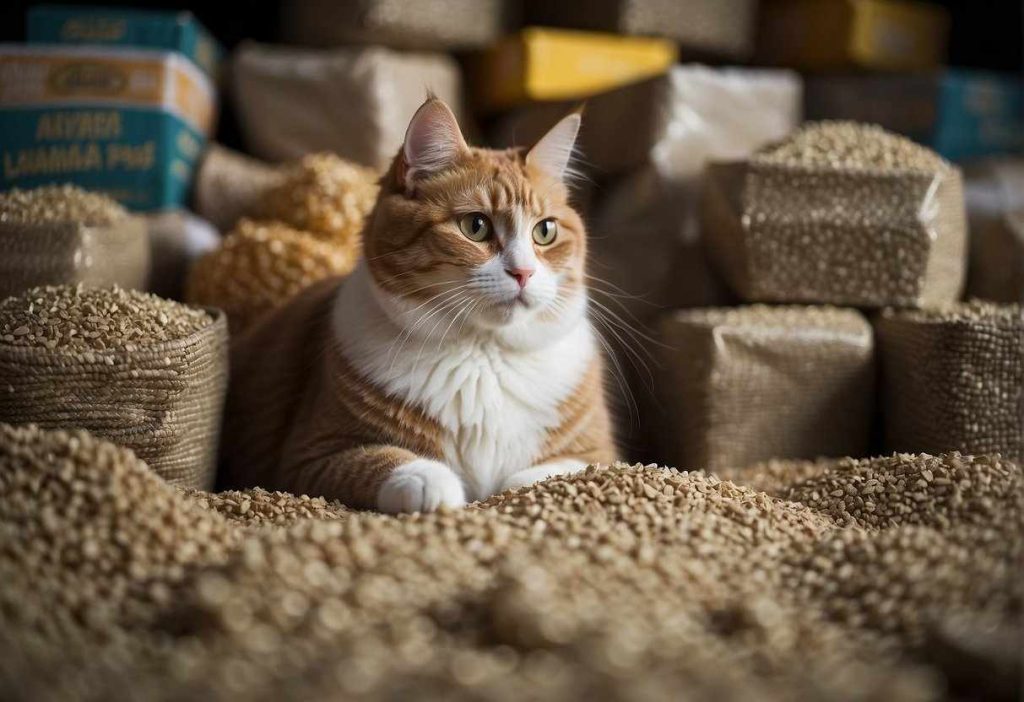
Let’s get up close and personal with the real costs of cat litter.
Breaking Down the Expenses
First up, let’s talk raw materials.
Bentonite clay is the star of most traditional cat litter. Mining and refining it isn’t a walk in the park—it needs some serious machinery and a good amount of energy.
That means every scoop you pour is packed with hidden costs.
Long-term Costs vs. Upfront Prices
Sure, the initial price might make you blink, but have you considered the lifespan of your litter? Some litters last longer than others, giving you more bang for your buck before you need to grab another bag.
Calculating Overall Value
Grab your calculators!
Consider absorption rates, odor control, and how often you’re changing the litter. A higher-priced option could actually be cheaper in the long run if it means using less and buying less frequently.
Cost-Effective Strategies
- Buy in bulk: You might pay more now, but it’s saving season in the long game.
- Hunt down sales: Keep your eyes peeled for discounts.
- Don’t shy away from alternative brands: Sometimes the underdog brands can surprise you with quality at a kinder price.
Talk about a journey through expenses, right? Remember, every little choice contributes to your cat litter’s price tag – so choose wisely!
Environmental Impact of Cat Litter
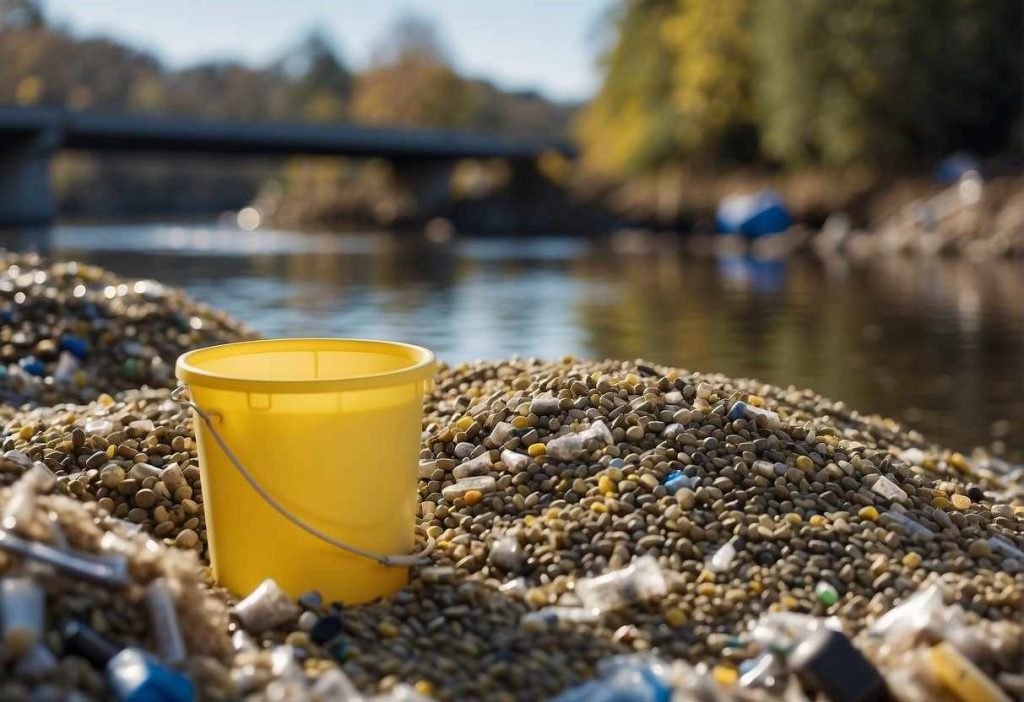
Have you ever paused to think about the little paw prints we leave on our planet’s health, just by caring for our furry friends?
I’m talking about the environmental impact of cat litter — quite the conundrum for eco-conscious cat owners like us, right?
Sustainability Concerns
First off, the materials used in traditional clay litter come from mining, which isn’t exactly a gentle hug to Mother Earth.
Picture bulldozers chugging away, removing layers of earth, basically saying goodbye to any habitats in their path. Ouch!
Lifecycle Analysis of Cat Litter Types
Consider this: each type of litter, from clay to silica to biodegradable alternatives like wheat or corn, has a different life story — from birth in a factory or field to its last hurrah in a landfill (or hopefully a compost heap!).
The environmental footprint includes all the energy guzzled up during production, transportation miles logged to get to your home, and how it all winds down when it’s “potty time” over.
- Traditional Clay Litter: Often ends up in landfills, and it doesn’t break down. Think about that for a second.
- Silica Gel Litter: Super absorbent but it’s a no-go for your green bin. (4)
- Biodegradable Options: A breath of fresh air for the environment, these can be composted (just be wary of toxoplasmosis with cat waste.) (5)
Eco-Friendly and Biodegradable Options
You’d probably give a thumbs up to plant-based litters that are designed to kick environmental friendliness up a notch. (6)
They often use renewable resources, and hey, they might even help your compost bin become the belle of the ball in terms of nutrition for your garden.
Quick comparisons:
- Clay-based litters: Heavy and non-biodegradable.
- Biodegradable litter (like pine, corn, and wheat): Lighter, compostable, and often made from recycled materials.
Remember, while it’s tempting to just grab any pack of litter, think of the paw prints you leave on the planet. Your choice makes a ripple!
Health and Safety Considerations
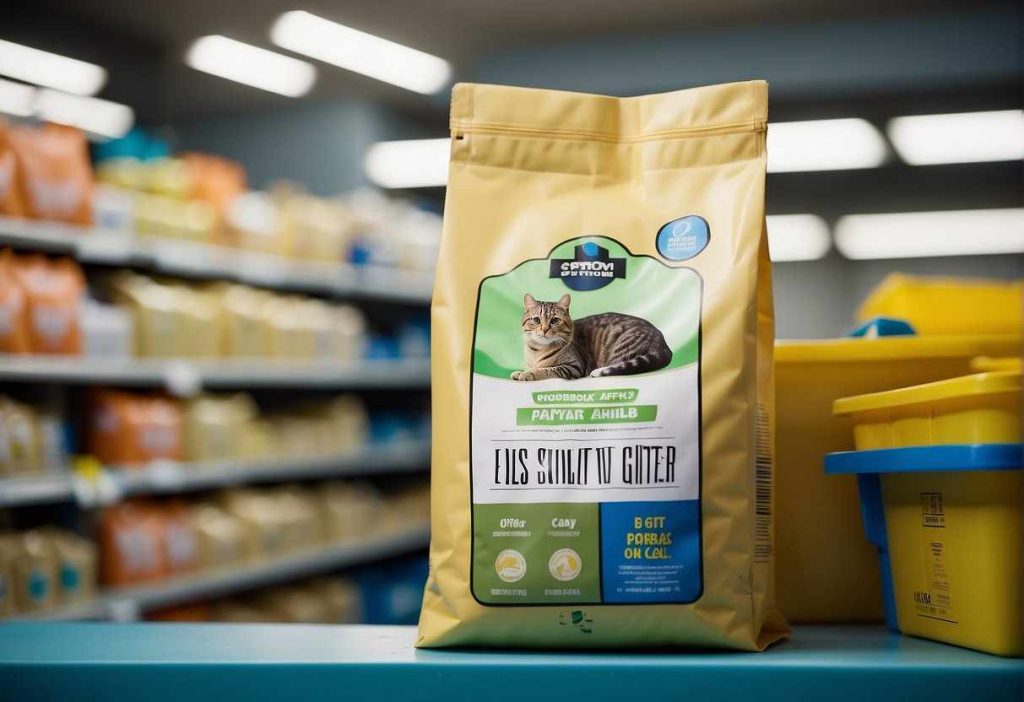
Your cuddly companion’s health is as important as your own, and manufacturers know this. Let’s break down the health and safety factors influencing the cost of cat litter.
Impact on Cats and Humans
- Cats: Felines are meticulous groomers. Dust from litter can lead to respiratory issues when inhaled.
- Humans: Litter dust can also affect you! Especially if you have allergies or asthma, you want to keep those sniffles at bay, right?
Risks Associated with Dust and Chemicals
- Some clumping litters contain sodium bentonite, which expands when wet and could potentially be harmful if ingested in large amounts by your curious kitty.
- Fragrances added to control odor might irritate sensitive noses.
Detailed Health Implications
Your feline friend doesn’t have nine lives when it comes to health.
Low-quality litter can have harmful chemicals or produce a lot of dust, which could lead to:
- Trouble breathing
- Hefty vet bills down the road
Safe and Natural Litter Options
It’s all about keeping it natural these days, isn’t it? Here’s a quick peek at safe options:
- Biodegradable Litters: Such as those made from recycled paper, wood, or even wheat! Bonus points for being eco-friendly. (7)
- Hypoallergenic Litters: A must-try for sensitive kitties and humans sharing the same breathing space.
Evaluation of Materials for Sensitive Individuals
You don the detective hat when it comes to checking labels, don’t you? It pays off!
The right litter makes a world of difference for those with allergies or asthma. No more Achoo symphony at the litter box!
Remember, every cat litter choice impacts your feline’s health and your household’s well-being.
It might seem like you’re just buying a bag of sand, but what you’re really getting is peace of mind. Now, doesn’t that seem worth it?
Analyzing Cat Litter Quality and Performance
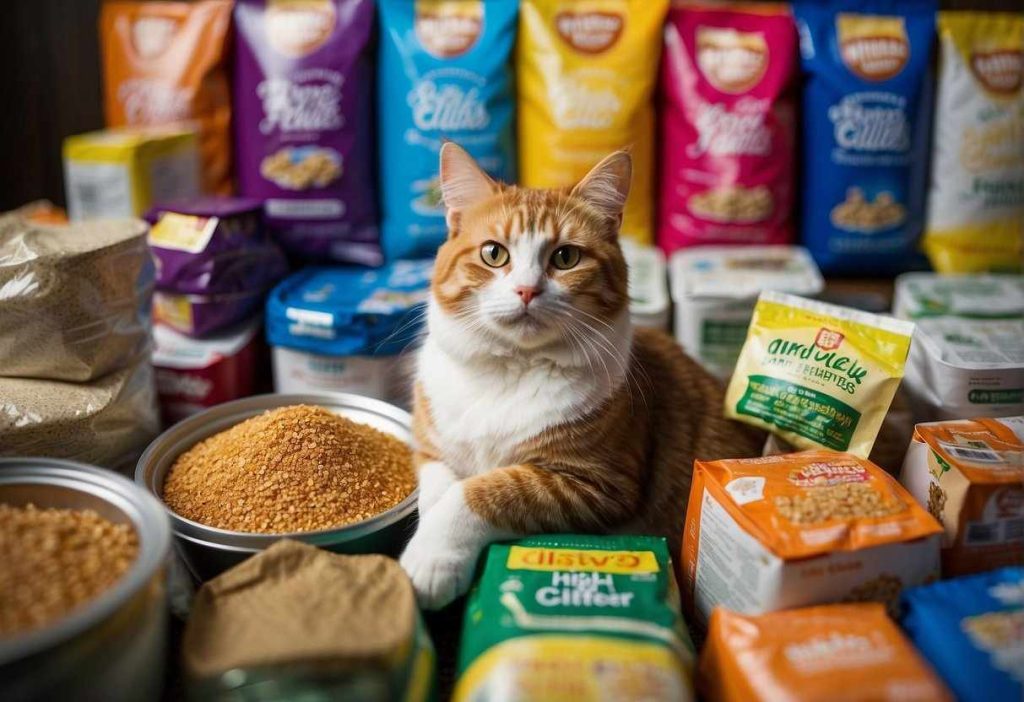
What Makes a Good Cat Litter?
At the heart of good cat litter, you’ll find two driving forces: odor control and absorbency. A cat litter that excels at these paves the path to a fresher and tidier home.
- Odor Control: You don’t want to walk into a room and be hit by an unpleasant reminder of your furry friend’s last visit to the litter box.
- High-quality cat litters trap and neutralize odors effectively.
- Absorbency: The performance of cat litter largely hinges on its ability to absorb moisture.
- The more absorbent it is, the less you’ll end up using, which means more savings in the long run!
Real-world Performance Comparisons
Imagine two cat litter side by side. One keeps the smells at bay while the other … not so much. User reviews often highlight these practical performances.
We want a superhero cat litter that tackles both odor and wetness without breaking a sweat.
Ease of Cleaning and Maintenance
A litter that’s a breeze to scoop makes all the difference. It’s not just about ease; it also speaks volumes about the litter’s efficiency.
The easier it is to maintain, the more time you can spend playing with your cat instead of cleaning after them.
Among the plethora of options available, investing in an Easy-Clean Litter Box can further streamline your cleaning routine, offering unparalleled convenience without compromising on quality.
User Experiences and Efficiency
Efficiency isn’t just a buzzword—it’s a real pocket-saver. When cat owners report less usage and happier cats, you know the litter’s doing something right.
Plus, if consumers assert a month’s supply costs just around $25, you better believe it’s a game-changer.
Remember, a cat litter that earns its stars in the real world is the one you want to stock up on. Your cat deserves the best (and so do your nostrils, right?).
Making Informed Decisions
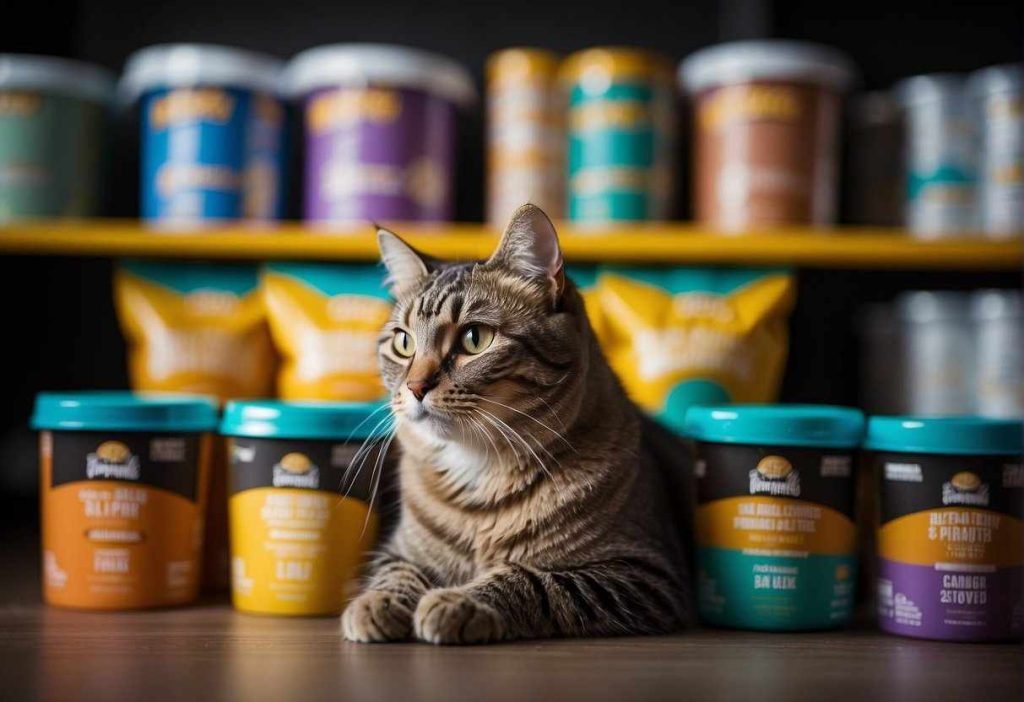
When it comes to cat litter, navigating the sea of options can be confusing, can’t it? You’re not just choosing a product; you’re choosing your furry friend’s bathroom—and that’s a big deal!
Selecting the Right Cat Litter
Your cat’s litter is an important aspect of their comfort.
Are they a digger or a lightweight litter lover? Maybe you’re ecologically conscious, or perhaps you’re sniffing out the best odor control.
It’s all about matching the litter to your lifestyle and your cat’s behavior. Here’s a breakdown to help:
- Comfort: Soft or pellet-like?
- Odor Control: Scented or unscented?
- Eco-Friendly: Recyclable, biodegradable, or traditional clay?
- Maintenance: Clumping or non-clumping?
- Price: Premium or budget-friendly?
Criteria Based on Lifestyle and Cat Needs
You’ve got a unique home, and what works for one may not for another.
Have multiple cats or just one? A small apartment or a house with a yard? Consider these to tailor your decision:
- Number of cats
- Size of space
- Allergies or sensitivities
- Cleaning schedule
Consulting Reviews and Expert Recommendations
Don’t go it alone! Your fellow cat owners have blazed trails and posted their views online.
Check out reviews and experts’ picks to weigh the pros and cons. They’ve been there, scooped that.
Where to look?
- Consumer review websites
- Cat-care forums
- Vet blogs
Leveraging Community Insights
And remember, community insights are golden.
Got a friend with the scoop on scoop-free litter? Or a neighborhood forum raving about eco-friendly options? Use these tidbits to your advantage.
- Local cat owner groups
- Online communities
- Pet store staff
By focusing on these elements you’ll navigate the vast landscape of cat litter choice with a confident stride. Keep your whiskers twitching for the perfect fit and your kitty purring with satisfaction!
Exploring Alternative and DIY Cat Litter Solutions
Let’s dive into some DIY alternatives that are friendly on your wallet and sometimes even better for the environment.
Homemade Options:
- Newspaper & Junk Mail: Have a pile of these lying around? Perfect!
- Shred the paper into long, thin strips.
- Soak in a mix of warm water and a drop of dish soap to eliminate inks and smells.
- Dry and voilà, soft paper litter!
Who Knew? Unconventional Materials:
- Sand: It’s practically the original cat litter!
- Wood Shavings or Pellets: They’re absorbent and natural. Plus, if your cat is the lumberjack type, they might appreciate the woodsy vibe.
- Sawdust: Got a woodworking friend? This could be gold! Just watch out for potential mess.
Here’s a chart to weigh your options:
| Material | Sustainability | Absorbency | Odor Control | Cost (on average) |
| Newspaper | High | Moderate | Low | Low |
| Wood Shavings | High | High | High | Moderate |
| Sand | Moderate | High | Low-Moderate | Low |
| Sawdust | High | High | Moderate | Low |
Got a green thumb? Grass seed litter could tickle your fancy. It’s biodegradable, clumps well, and you might just feel like a cat litter alchemist!
Remember, adopting DIY cat litter solutions can lighten the load on your wallet and reduce waste—bravo for being eco-conscious!
Plus, imagine never running out of cat litter on a Sunday evening again. Isn’t that a comforting thought?
Give these a go, and your feline friend might just give you a “paws-up” for your ingenuity!
Enhancing User Experience with Real-World Evidence
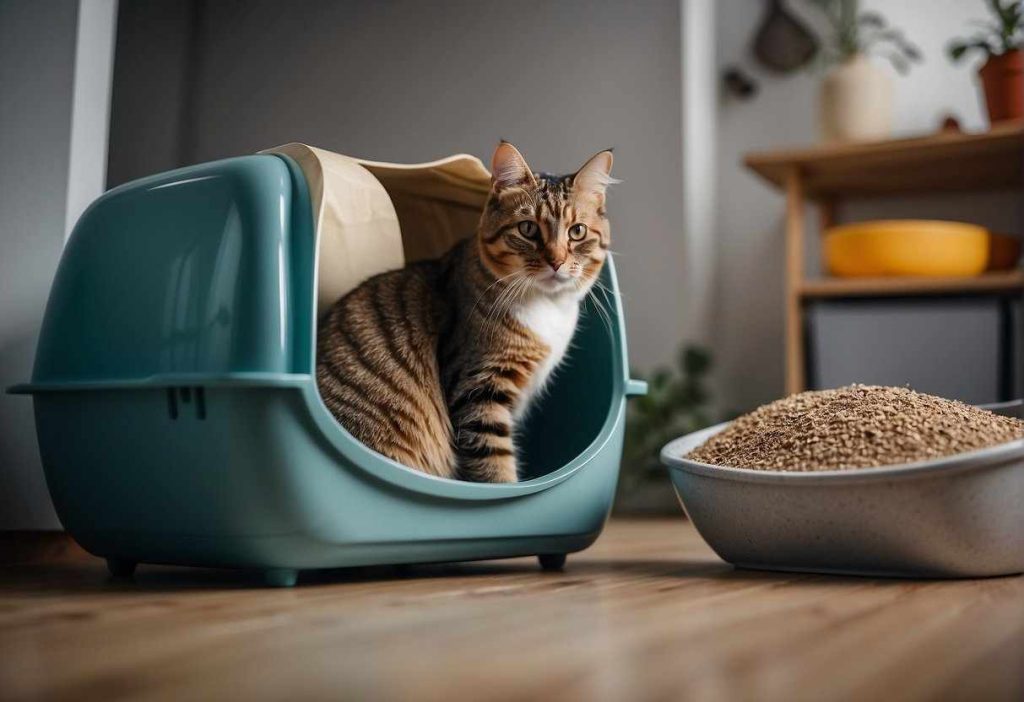
Litter costs can cause quite the sticker shock! Let’s unpack some evidence:
Real Experiences, Real Feedback
Tired of litter that your feline friend snubs?
Studies show that cats prefer certain litters; selections like ATTRACT litters have been observed to win over feline approval, with some evidence suggesting a higher usage rate for urination over plant-based alternatives.
What do cat parents say?
Testimonials often highlight satisfaction with litters that control odors and are clump-friendly, hallmarks that can hike up the price.
But remember, expensive doesn’t always mean better. Seek out those success stories and watch for cautionary tales to make an informed choice!
Balancing the Scales: Premium vs. Practicality
- Premium litters boast advanced odor control and superior absorption.
- Practical choices might save pennies but can cost you a tidy home.
Consider the facts: Male cats may show a preference for sniffing and using certain litters more than their female counterparts. That’s an interesting tidbit for the multi-cat household, isn’t it?
So, where does all of this leave you? Informed, equipped, and a step closer to making the best pick for your purring roommate.
Remember, the right litter can mean fewer messes and a happy cat, contributing to a harmonious home.
Now, armed with these snippets of wisdom, tread confidently down the pet store aisle. You’ve got this!
Quick Recap
Wondering why your wallet feels lighter after picking up cat litter? You’re not alone! Let’s break down the dollars and sense behind your feline friend’s bathroom essentials.
Raw Materials: Your cat’s litter usually starts with bentonite clay. Mining this material isn’t child’s play; it takes heavy machinery and loads of energy. Both of these up the price tag.
Production Costs: Transforming raw bentonite into the clumps that make your life easier also means adding costs. Processing, packaging, and getting the litter to shelves ain’t cheap.
Demand and Quality: We all want the best for our purring pals. Higher demand for quality litter that masks odors and is easy on kitty’s paws can drive up costs.
Money-Saving Tips:
- Compare prices between brands and stores. Sometimes deals are just an aisle away!
- Buy in bulk – grab those larger bags for long-term savings.
- Consider alternatives, like wood or paper-based litter that might be easier on your budget.
Remember, while there’s no escaping the need for cat litter, understanding these factors can help you make budget-friendly choices.
Your cat won’t know the difference, but your bank account sure will!
Frequently Asked Questions
Navigating the world of cat litter costs can be like trying to solve a feline mystery. You’re probably looking for answers to why you’re spending so much on your cat’s bathroom needs.
Let’s tackle some of your most common queries.
What makes some cat litter more expensive than others?
Some cat litters command a higher price due to premium ingredients that control odor and enhance clumping.
Others might feature added benefits like lower dust levels or be marketed as natural or hypoallergenic, which can drive up costs.
How can I find cost-effective cat litter without compromising on quality?
To save on litter without skimping on the needs of your furry pal, compare brands, consider bulk buying, look for sales, or use coupons.
You might also find that mid-range brands offer a good balance between performance and price.
Are eco-friendly cat litter worth the extra cost?
Eco-friendly cat litters often cost more due to sustainable material sourcing and production practices.
If eco-friendliness is a priority for you, the extra cost might be justified, especially considering the environmental benefits and potential health positives for both you and your cat.
Can the type of cat litter I use affect my cat’s health?
Yes, the type of litter you use can impact your cat’s health.
Litters made from materials that produce less dust can help prevent respiratory issues, while those with artificial fragrances or chemicals might cause allergies or sensitivities.
What are the most environmentally sustainable cat litter options available?
Sustainable options include litter made from recycled paper, wood, barley, or even walnut shells.
These materials are biodegradable and have a smaller environmental footprint than traditional clay litter.
How does the production process contribute to the cost of cat litter?
The cost of cat litter is influenced by the extraction and processing of materials, such as the mining of clay or the manufacturing of silica gel.
These processes, along with transportation and packaging, can be costly, contributing to the final retail price.
What are some DIY cat litter solutions that can save me money?
DIY cat litter options range from repurposed household items like shredded newspaper or sawdust to natural alternatives like sand or baking soda.
These can be more economical and let you use materials you might already have at home.

